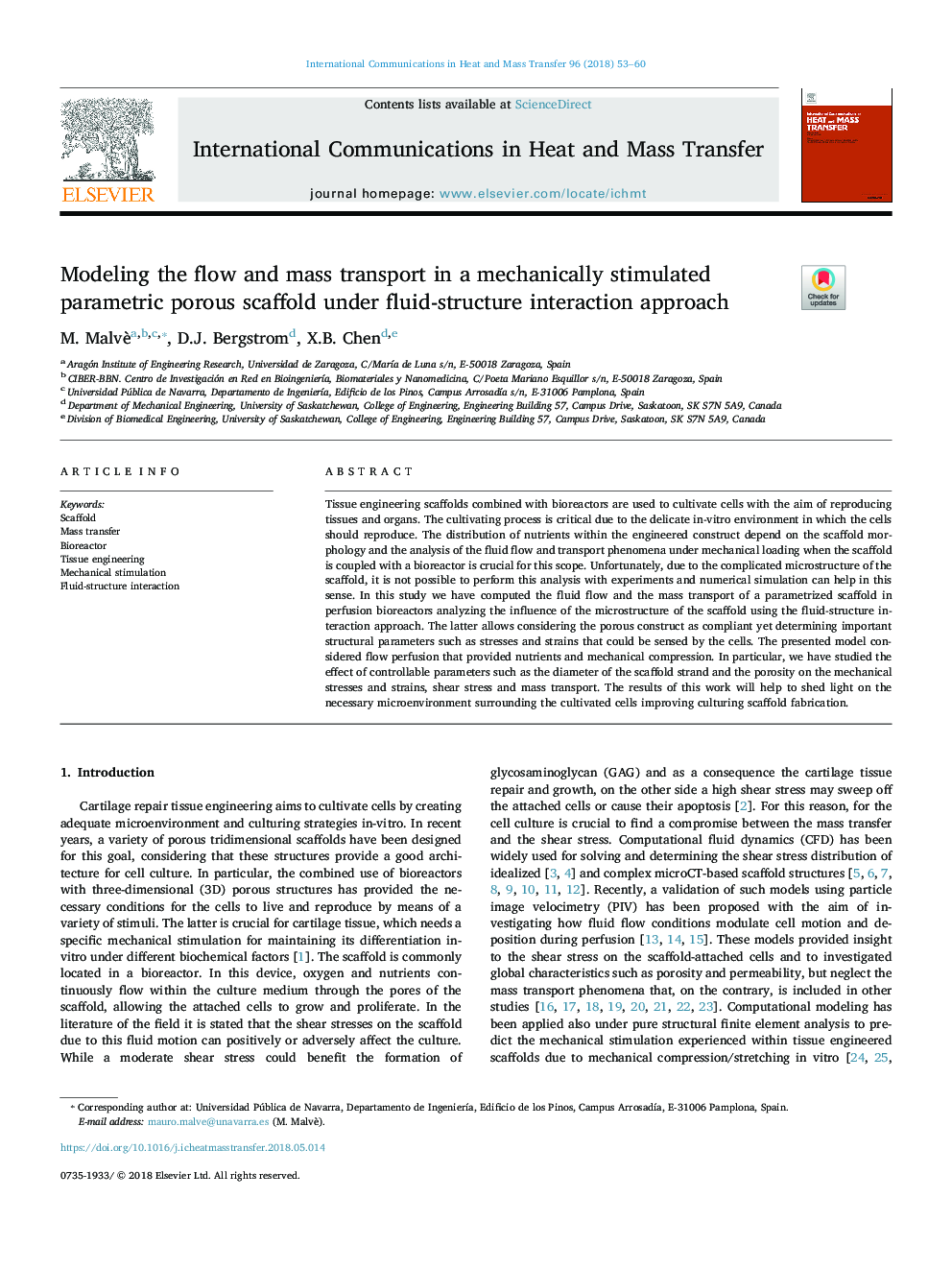| Article ID | Journal | Published Year | Pages | File Type |
|---|---|---|---|---|
| 7052764 | International Communications in Heat and Mass Transfer | 2018 | 8 Pages |
Abstract
Tissue engineering scaffolds combined with bioreactors are used to cultivate cells with the aim of reproducing tissues and organs. The cultivating process is critical due to the delicate in-vitro environment in which the cells should reproduce. The distribution of nutrients within the engineered construct depend on the scaffold morphology and the analysis of the fluid flow and transport phenomena under mechanical loading when the scaffold is coupled with a bioreactor is crucial for this scope. Unfortunately, due to the complicated microstructure of the scaffold, it is not possible to perform this analysis with experiments and numerical simulation can help in this sense. In this study we have computed the fluid flow and the mass transport of a parametrized scaffold in perfusion bioreactors analyzing the influence of the microstructure of the scaffold using the fluid-structure interaction approach. The latter allows considering the porous construct as compliant yet determining important structural parameters such as stresses and strains that could be sensed by the cells. The presented model considered flow perfusion that provided nutrients and mechanical compression. In particular, we have studied the effect of controllable parameters such as the diameter of the scaffold strand and the porosity on the mechanical stresses and strains, shear stress and mass transport. The results of this work will help to shed light on the necessary microenvironment surrounding the cultivated cells improving culturing scaffold fabrication.
Keywords
Related Topics
Physical Sciences and Engineering
Chemical Engineering
Fluid Flow and Transfer Processes
Authors
M. Malvè, D.J. Bergstrom, X.B. Chen,
